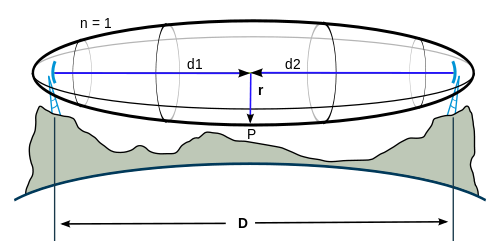Choosing the right height for radiolink antenna masts in telecommunications involves considering the concept of Fresnel Zones. Here’s how it works:
Understanding Fresnel Zones: When energy is transmitted between radiolink antennas, it forms a shape resembling a spindle or cigar, with the thickest part occurring at the midpoint between the antennas. This region is known as the Fresnel Zone. It’s crucial to ensure that no obstacles, such as tree tops, buildings, hills, or even the ground surface, intersect with the Fresnel Zone. If obstacles interfere with the Fresnel Zone, the signal’s strength and quality will be compromised.
Calculating Fresnel Zone Thickness: Various online tools and calculators are available to calculate the thickness of the Fresnel Zone in a given location between antennas. These calculations take into account factors such as the frequency of transmission, the distance between antennas, and the terrain profile.
Determining Mast Height: With the information obtained from calculating the Fresnel Zone thickness and considering maps and real terrain measurements, you can determine the minimum mast or tower height required to ensure unobstructed transmission of energy between radiolink antennas. The goal is to find a height that allows for clearance of all obstacles within the Fresnel Zone, thus maximizing signal strength and reliability.
By carefully considering Fresnel Zones and choosing appropriate mast heights, telecommunications professionals can optimize radiolink performance and ensure reliable communication over long distances.


